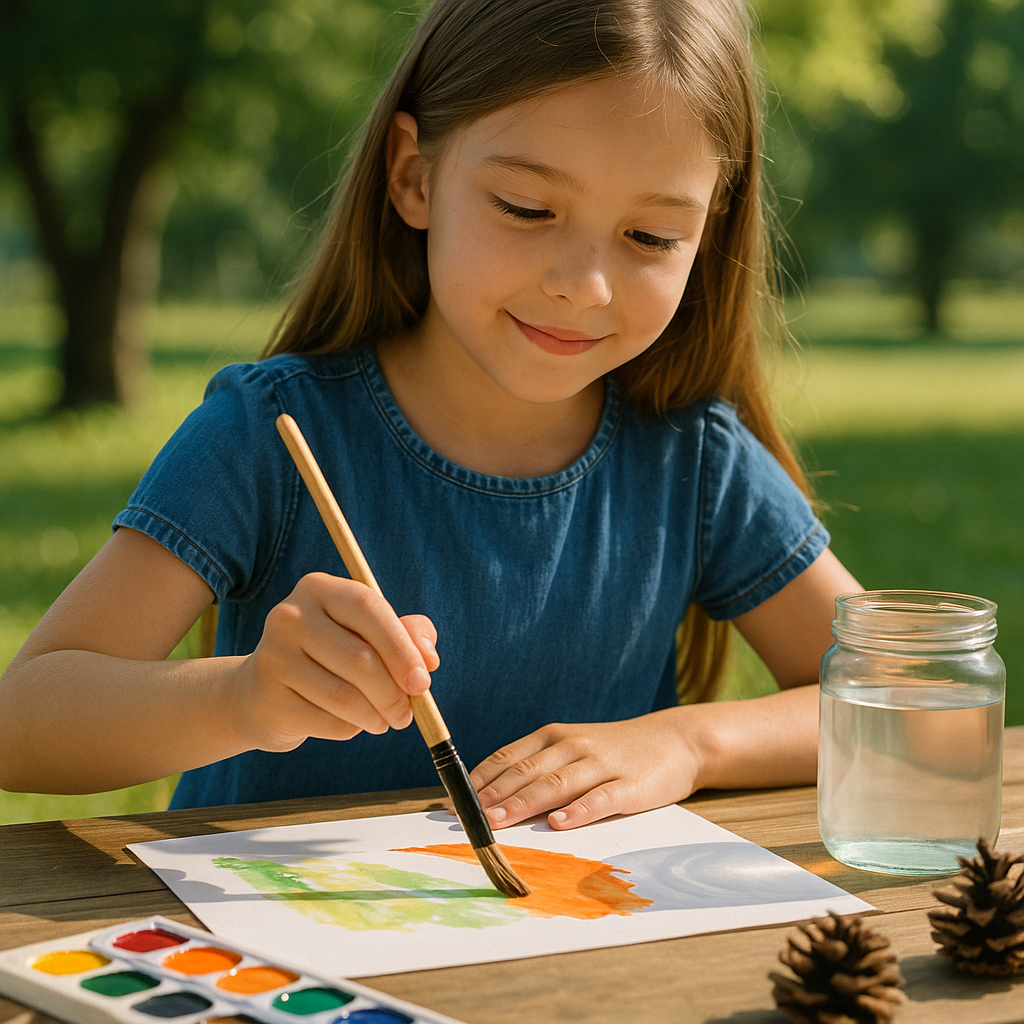Future Ready Minds
Created on-
October 31, 2025
Analog Wellness for Kids: A Digital Detox Trend Transforming 2025

In 2025, a new wave of wellness is emerging. It is not about the latest app or digital detox challenge but about returning to something timeless. Analog wellness is gaining global attention as families, schools, and mental health professionals rediscover the value of low-tech activities in nurturing children’s well-being.
Children today spend more time online than ever before. While technology brings learning opportunities, it also increases anxiety, distraction, and emotional exhaustion. The analog wellness movement encourages a mindful balance between screen time and real-life experiences to build stronger, calmer, and more connected kids.
What Is Analog Wellness?
Analog wellness focuses on simple, screen-free practices that support emotional balance, creativity, and resilience. It encourages slowing down, reconnecting with nature, and engaging in activities that stimulate the senses.
Examples include journaling, gardening, playing board games, sketching, or taking a walk in the park. These moments help children process emotions, focus their attention, and develop a sense of inner calm.
Unlike digital wellness, which often depends on apps or online programs, analog wellness is about being present. It reminds us that meaningful growth often happens when screens are off, and our minds are free to explore the world around us.
Why Digital Overload Is Affecting Mental Health
Recent research from the Canadian Institute for Health Information reveals a steady increase in anxiety and mood disorders among children and teens. Experts attribute part of this rise to overstimulation from screens, social media pressure, and reduced in-person interaction.
Digital overload affects the brain’s reward system. The constant stimulation from likes, notifications, and videos makes it difficult for young minds to find satisfaction in slower, simpler activities. This leads to irritability, poor focus, and lower self-esteem.
By introducing analog wellness habits, parents and educators can help children regulate their emotions and rediscover balance. When children learn to find joy offline, they develop stronger emotional intelligence and mental resilience.
The Benefits of Analog Wellness for Children
Analog wellness supports multiple aspects of child development:
- Improved focus and attention: Offline play encourages deeper concentration and cognitive growth.
- Better emotional regulation: Slower activities allow children to identify and manage their feelings.
- Enhanced creativity: When screens are removed, imagination flourishes.
- Stronger social bonds: Shared analog experiences like cooking or crafting promote empathy and teamwork.
- Healthier sleep patterns: Reduced screen time helps regulate melatonin, supporting better rest and recovery.
These benefits align with the neuroscience-based approach that Future Ready Minds promotes in coaching and mental wellness programs.
Practical Ways to Integrate Analog Wellness at Home and School
Nature-Based Activities
Encourage children to spend at least an hour outdoors daily. This could include hiking, gardening, or simply observing nature. Being outdoors lowers cortisol levels and boosts overall mood. Schools can implement “nature recess” or outdoor learning days to encourage curiosity and environmental connection.
Creative and Reflective Play
Replace passive screen time with activities that inspire creativity. Painting, writing stories, building with blocks, or crafting are simple yet powerful ways to engage the brain. Reflection journals or gratitude lists can also help students process emotions and build a sense of purpose.
Mindfulness Without Screens
Introduce mindfulness practices that do not involve technology. Breathing exercises, guided meditation led by a teacher, or quiet reflection time can calm the nervous system. Encourage silence and presence. The absence of digital noise allows students to reconnect with their inner voice.
How Parents and Educators Can Support the Shift
Parents and teachers are key role models. When adults embrace analog habits, children naturally follow. Families can create “screen-free zones” such as dining areas or bedrooms to strengthen connection and focus.
Educators can incorporate “analog breaks” into the classroom. Activities like creative writing, doodling, or discussion circles allow students to recharge their attention. Schools can also develop digital literacy programs that teach moderation rather than elimination.
By showing that balance is possible, adults help children form a healthy lifelong relationship with technology.
Building a Future-Ready Mindset Through Analog Wellness
The concept of a future-ready mind is not about keeping up with technology but about learning to adapt to it consciously. Analog wellness strengthens adaptability by teaching children how to manage emotions, think critically, and stay grounded in a fast-paced world.
Neuroscience shows that when kids engage in tactile, creative, and outdoor experiences, their brains form stronger neural pathways for problem-solving and emotional regulation. These are the exact skills needed to thrive in uncertain times.
Analog wellness is not anti-technology. It is pro-balance. The key is to guide children toward intentional choices that support both digital fluency and mental clarity.
Final Thoughts
Analog wellness offers a refreshing path for families seeking balance in the digital era. By encouraging children to slow down, connect with nature, and engage in creative play, we help them develop resilience, joy, and a healthy mind.
If your child or students are struggling with focus, anxiety, or digital overload, our Future Ready Minds programs can help build healthy tech habits and emotional strength. Visit www.futurereadyminds.com to explore our coaching and educational workshops today.





.svg)